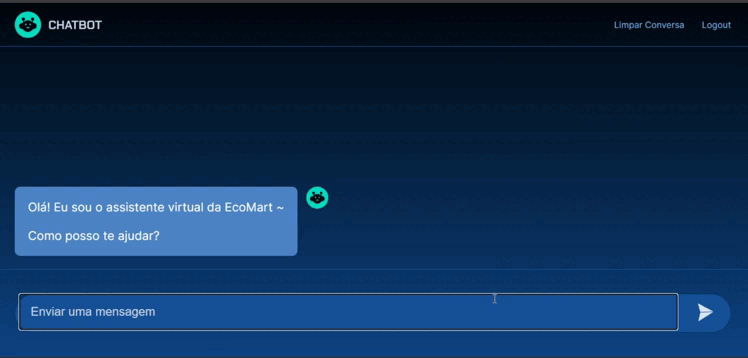Table of Contents
This project involves the creation of a virtual assistant for an ecommerce, developed using Python and the Django framework. The assistant is powered by an artificial intelligence model called ChatGPT, which is integrated into the project through the OpenAI library.
The information provided for the operation of the target is stored in a file. This file contains customer conversation history, where each question is given a summary of the answers to save space. When a customer asks a question, the assistant searches the file for the information needed to provide an appropriate answer.
Customer conversation history is managed through user login. This means that conversation information is associated with a specific user, allowing the assistant to personalize its responses based on that user's past interactions.
There are some restrictions for this project. The recipient is designed to answer e-commerce related questions only. It cannot handle questions outside this scope.
-
Clone the repo
git clone https://github.com/HeitorLouzeiro/chatbot-django-chatgpt.git
-
Access the project folder in terminal/cmd
cd chatbot-django-chatgpt -
Create a virtualenv with Python 3.9.0.
python -m venv venv
-
Activate virtualenv.
- Ubunto
source venv/bin/activate- MacOs
source venv/bin/activate- Windows
venv\scripts\activate
-
Install as dependencies.
pip install -r requirements.txt
-
Configure an instance with .env.
cp .env-example .env
or
Copy the env-example to a new file called .env and then open it and change the variable values if necessary
-
Run the migrations.
python manage.py migrate
-
Create a Superuser.
python manage.py createsuperuser
-
Run the application.
python manage.py runserver
- Home Page.
- Login Page.
- Logout Page.
- Conversation history.
- Conversation summarizer.
See the open issues for a full list of proposed features (and known issues).
Contributions are what make the open source community such an amazing place to learn, inspire, and create. Any contributions you make are greatly appreciated.
If you have a suggestion that would make this better, please fork the repo and create a pull request. You can also simply open an issue with the tag "enhancement". Don't forget to give the project a star! Thanks again!
- Fork the Project
- Create your Feature Branch (
git checkout -b feature/Improvements) - Commit your Changes (
git commit -m 'Add my new Enhancements') - Push to the Branch (
git push origin feature/Improvements) - Open a Pull Request
We thank the following people who contributed to this project:
|
Heitor Louzeiro |
Distributed under the MIT License. See LICENSE for more information.
Project Link: https://github.com/HeitorLouzeiro/chatbot-django-chatgpt

















